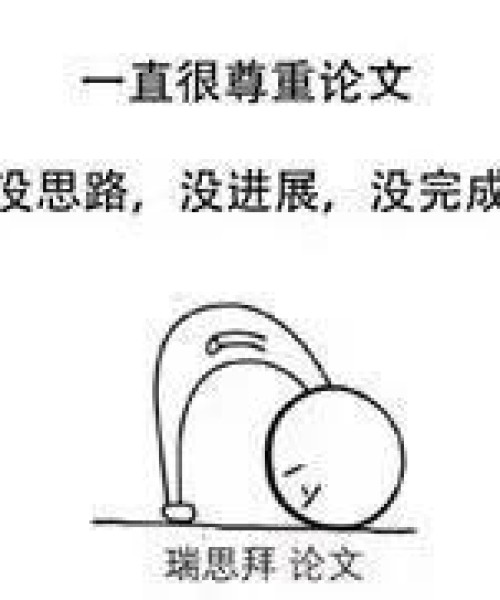On Structure Of An Aircraft Engineering Essay
Published:
Introduction
This is assignment is based on structure of an aircraft. The structure of an aircraft has been explained briefly in this assignment. I am going to start my assignment with typical aircraft diagram. This assignment is particular based on commercial aircraft, emphasising various major structural components. The major structural components refer to the primary structure of an aircraft. If the primary structure fails the aircraft won't be capable of flying anymore. It can lead to complete structural damage. I am going to do an intensive research on load transfer structure using Aircraft structure from engineering book, and I am going to explain about the maximum load case which will cover N-V diagram as well
C:\Users\RIZWAN ULLAH\Pictures\pics.jpg
Fig 1: Cutaway drawing of a modern transport aircraft (1)
Structure Classification:
For the purpose of assessing damage and the type of repair to be carried out on the aircraft the structure is divided into three main categories
Primary Structure
Secondary Structure
Tertiary Structure
Primary Structure:
Primary structure includes all the portions of the aircraft, the failure of which during flight or on the ground would cause catastrophic structural collapse and loss of control.
Examples of Primary Structure include:
Wings
Fuselage
Tail
Landing Gear
Wings
Wing is a surface providing the lift to the aircraft. They are attached to fuselage on each side .They are usually in aerofoil shape. They can be attached at the top, middle, or lower portion of the fuselage depending on the required performance for the particular airplane. The number of wings can also vary.
The wings consist of two essential parts. The internal wing structure which consist of spars, ribs, stringers and the external wing, which is the skin.
C:\Users\RIZWAN ULLAH\Pictures\wing-components.gif
Fig 2: Components of the wing (2)
In a fixed-wing aircraft, the spar is the main structural member of the wing, located at right angle to the fuselage running spanwise. They run from the base of the wing toward the tip and are usually attached to the fuselage by the wing fittings. It carries flight loads and the weight of the wing. Sometimes more than one spar may be located on a wing or there might be none at all (3)
In the framework of a wing, ribs are the crosspieces running from the leading edge to the trailing edge of the wing. The ribs give the wings its contour and shape and transmit the load from the skin to the spars. Ribs are also used in ailerons, elevators, fins and stabilizer (4)
Stiffener which assists sheet materials to carry loads along their length. With integral construction they are machined or etched out of the skin panel
Fuselage
The body of the airplane, which carries the crew and payload, such as passengers or cargo, is called the fuselage. It looks like a tube which holds most of the aircraft together. The other structural units are directly or indirectly attached to it. It also provides stability and also control pitch and yaw movement of the aircraft
C:\Users\RIZWAN ULLAH\Pictures\httpimages.google.co.ukimgresimgurl=httpwww.grc.nasa.govWWWK-12airplaneImagesfuselage.gif&imgrefurl=httpwww.grc.nasa.govWWWK-12airplanefuselage.html&usg=__JKzqTJ1GPBfQcNIPubnvd2PTbqk=&h=533&w=710&sz=22&hl=en&start=1&sig2=YzE.jpg (5)
Fig 3: Fuselage
Types of Structure:
There are two different types of structure:
Monocoque type
Semi Monocoque type
C:\Users\RIZWAN ULLAH\Pictures\Untitled.jpg (6)
Fig 4: Warren truss of welded tubular steel
Monocoque Construction:
This is further classified into the true Monocoque construction and the more common semi Monocoque construction.
The true Monocoque construction uses formers, frames assemblies, and bulk heads to give shape to the fuselage, but the skin carries the primary stresses. Since the bracing members are present, the skin must be strong enough to keep the fuselage rigid. Thus, the biggest problem involved in Monocoque construction is maintaining enough strength while keeping the weight within allowable limits.
C:\Users\RIZWAN ULLAH\Pictures\httpairplanegroundschools.comAircraft-StructureFigure1-3.jpg.jpg (7)
Fig5: Monocoque Construction
Semi Monocoque Construction
The semi monocoque fuselage is constructed primarily of the alloys of aluminium and magnesium, although steel and titanium are found in areas of high temperatures.
C:\Users\RIZWAN ULLAH\Pictures\semimonocoquefuselagedesign1.jpg (8)
Fig6: Semi Monocoque Construction
The principal structural parts of the fuselage are longerons, formers, stringers and bulkheads
Longerons are main structural member of a fuselage or nacelle. Longerons are a thin strip of metal to which the skin of the aircraft is fastened. Longerons are attached to formers in the case of fuselage (9)
The vertical structural members are referred to as bulk heads, frames and formers. The heaviest of these vertical members are located at intervals to carry concentrated loads and at points where fittings are used to attach other units, such as the wings, power plants, and stabilizers
Tail
The stabilizing surfaces at the rear of the airplane are the horizontal and vertical tails. These major components are often divided into smaller elements. The forward, usually fixed, part of horizontal tail is the horizontal stabilizer. Attached to it is a movable control surface called elevator. Changing the elevator deflection changes the lift on the horizontal tail and thereby controls the angle of attack and lift of the wing. Similarly, the vertical tail is divided into the fixed vertical stabilizer or fin and the rudder.
The main role of horizontal stabilizer is to provide longitudinal stability about lateral axis. It refers to motion in pitch; thereby it controls the angle of attack.
The main role of the vertical stabilizer is to provide directional stability about the normal axis. It controls the yawing motion of an aircraft.
(10)
Fig7: Empennage
Load Transfer Structure
The basic function of an aircraft's structure are to transmit and resist the loads applied on aircraft so the structure can provide aerodynamic shape and protect the aircraft from environmental conditions encountered in flight.
The two classes of loads may be further divided into surface forces which act upon the surface of the structure and body forces which act over the volume of the structure and are produced by gravitational and inertial effects. Basically all air loads are the resultant of the pressure distribution over the surfaces of the skin produced by steady flight, manoeuvre or gust conditions. Generally, these resultant cause direct loads, bending, shear and torsion in all parts of the structure.
First, we shall consider wing sections, while performing the same function can differ widely in their structural complexity. The shape of the cross section is governed by aerodynamic considerations and clearly must be maintained for all combinations of load. They also act with the skin in resisting the distributed aerodynamics pressure loads; they distribute concentrated loads into the structure and redistribute stress around discontinuities, such as undercarriage wells, inspection panels and fuel tanks, in the wing surface. Ribs increase the column buckling stress of the longitudinal stiffeners by providing end restraint and establishing their column length; in a similar manner they increase the plate buckling stress of the skin panels. In the outer portions of the wing, where the cross section may be relatively small if the wing is tapered and the loads are light, ribs act primarily as formers for the aerofoil shape.
Fuselages, while of different shapes to the aerodynamics surfaces, comprise members which perform similar functions to their counterparts in the wings and the tailplane. Aerodynamics forces on the fuselage skin are relatively low; on the other hand, the fuselage supports large concentrated loads such as wing reactions, tailplane reactions, undercarriage reactions and it carries payloads of varying size and weight, which may cause large inertia forces. (11)
Maximum Stress Load case
Many forces and structural stresses act on an aircraft. When it is static, the force of gravity produces weight, which is supported by the landing gear. During flight manoeuvre causes acceleration or deceleration which increases forces and stresses on wings and fuselage.
V-n Diagram (15)
C:\Users\RIZWAN ULLAH\Pictures\image2.gif
Fig 8: Manoeuvre Diagram
This diagram illustrates the variation in load factor with airspeed for maneuvers. At low speeds the maximum load factor is constrained by aircraft maximum CL. At higher speeds the maneuver load factor may be restricted.
The maximum manoeuvre load factor is usually +2.5 . If the airplane weighs less than 50,000 lbs., however, the load factor must be given by: n= 2.1 + 24,000 / (W+10,000)
n need not be greater than 3.8. This is the required manoeuvre load factor at all speeds up to Vc, unless the maximum achievable load factor is limited by stall.
The structural stresses to which the aircraft is subjected to its maximum:
Tension
Compression
Torsion
Shear
Bending
Tension
It is defined as pull, in level flight, aircraft engine and propeller pulls the aircraft forward while fuselage and tail resist that movement because of the airflow around them. Airframe is stretched as a result.
Elevator control cable is in additional tension when the pilot moves the control column
Compression
Compression is the resistance to crushing. Aircraft wings are subjected to compression stresses, on the ground aircraft landing gear struts are under compression stress
C:\Users\RIZWAN ULLAH\Pictures\aaaa.jpg (12)
Fig 9: Compression and tension stress
Torsion
It results from a twisting force. It is produced in an engine crankshaft while the engine is running. The airframe is also subjected to stresses during turns.
C:\Users\RIZWAN ULLAH\Pictures\Untitled.jpg (13)
Fig 10: Torsional stress
Shear
Shear stress is the outcome of sliding one part over the other in opposite directions. The rivets and bolts experience shear stresses.
Bending
Bending is a combination of tension and compression. The wing spars of an aircraft in flight are subject to bending stresses
C:\Users\RIZWAN ULLAH\Pictures\httpwww.aerospaceweb.orgquestionperformanceq0146.shtml.gif (14)
Fig 11: Banking angle
When the aircraft is taking a sharp turn most of the forces acting on the aircraft are it's at maximum, because there are forces that tend to keep the aircraft in its original path.









